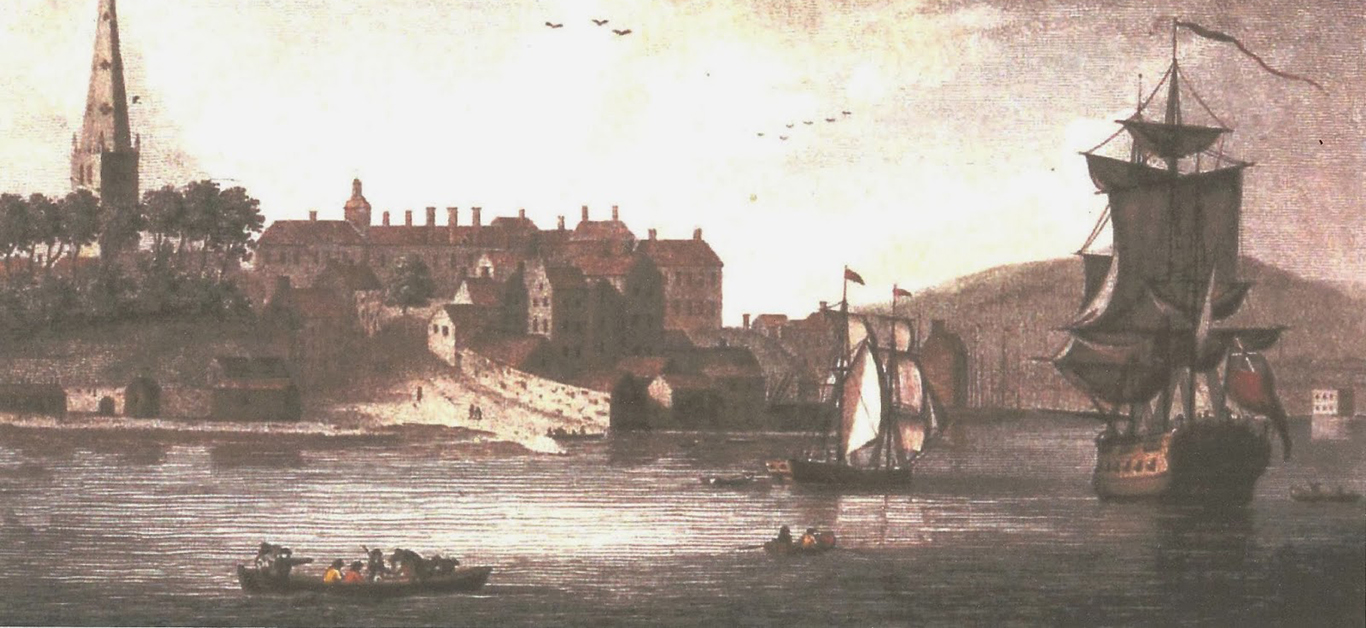
“The Port of Derry and its Diaspora” By Brian Mitchell
From the late 1600s, in the age of the sailing ships, to the onset of the Second World War in 1939, when the last transatlantic steamer sailed from the port, Derry~Londonderry was one of the principal emigration ports in Ireland.
Prior to the coming of the railways and, in the age of sailing ships, from 1680 to 1860, Derry was the port of departure for the peoples of Derry, Donegal and Tyrone, and, from 1861 to 1939, in the age of the steamship and railways, migrants from Ulster, north Connacht and north Leinster left Ireland through Derry.
The emigration trade established Derry as one of the chief Irish ports for transatlantic trade in the 18th century. Links between the cities of Londonderry and Philadelphia were established, through trade, in the 18th century. Flaxseed, the raw material of the linen industry, was shipped to Derry from Philadelphia in the early spring, and on the return voyage linen and emigrants were destined for Philadelphia. Of 128 vessels advertised to sail from Derry between 1750 and 1775, 99 (77%) sailed for Philadelphia with 10 each destined for Charleston (in South Carolina) and Nova Scotia (Canada).
Saint John (New Brunswick) and Quebec in Canada, and New York and Philadelphia in the United States were the destination ports of emigrants departing from Derry in the first half of the 19th century. For example, of 38 emigrant ships advertised to sail from Derry in 1836, 12 were destined for Saint John (New Brunswick), 12 for Philadelphia, 7 for Quebec and 6 for New York.
Although Protestant migration as a proportion of Irish migration declined relative to Catholic migration after 1815, the numbers of Irish Protestants emigrating to North America in the first half of the 19th century was still greater than numbers that departed in 18th century. Throughout 18th and 19th centuries many small farmers, agricultural labourers and rural tradesmen in Ireland, whether Catholic or Protestant, saw emigration as the only solution to their declining economic prospects.
From 1861 right through to 1939 ocean-going liners called at Moville, in the deeper waters of Lough Foyle, some 18 miles downstream from Derry, to pick up emigrants who were ferried from Derry in paddle tenders. During this period, at various times, four shipping lines – Anchor Line, Anchor-Donaldson Line, Allan Line and Dominion Line – made Derry a stage on the voyage from Liverpool or Glasgow to Canada or the United States.
From the 1860s the growth of traffic through Derry port was increasingly dependent upon the transatlantic steamers calling at Moville to pick up passengers and mails on their way to Canada and USA. There was a steady growth in tonnage of transatlantic steamers calling at Moville, rising from 200,000 tons in 1866 to a peak of 940,000 tons in 1905.
In 1883, emigrant departures from Derry exceeded the number that went through the port in the peak famine year of 1847 (12,385); when 15,217 emigrants boarded 154 steamers calling at Moville, with 10,496 destined for the United States and 4,721 for Canada.
Annual Emigration Reports from the Port of Londonderry published in the Londonderry Sentinel show that between 1877 and 1897 inclusive 193,887 passengers embarked at Moville for North America; with 153,886 destined for USA and 40,001 to Canada.
Government statistics further record that from 1851 to 1920, 407,781 people from northwest Ireland (i.e. Counties Derry, Donegal and Tyrone) emigrated to lands beyond the British Isles.
The journey for some 9 million of the Irish Diaspora, now living in Great Britain, USA, Canada, Australia, New Zealand and South Africa, began in Derry. Their story begins in Derry; e.g., their ancestor boarded a sailing ship at Shipquay Place, or stopped at Gweedore Bar, Waterloo Street on their way from west Donegal to Glasgow on the Scotch Boat, or arrived in Derry by rail, lodged in Bridge Street and then headed down Foyle, on a tender, to connect with transatlantic liners at Moville.
Derry is the only town in Ireland which, with authenticity, can tell the complete story of Irish emigration. Derry remained a major Irish emigration port throughout all significant phases of emigration from Ireland, such as the 18th century outflow of Scots-Irish to colonial America; pre-Famine, Famine and post-Famine emigration to North America; and cross-channel migration to Britain via Glasgow and Liverpool.
Just as Ellis Island is seen as the entry point for American immigrants (100 million Americans can trace an ancestor back to Ellis Island), Derry can be positioned as the starting point of this journey
Brian Mitchell’s Books on Derry and Ireland in General
Brian Mitchell is Northern Ireland’s leading genealogist. He has spent years compiling sources on Derry, in particular, and on emigration from Northern Ireland in general. He is also the author of the celebrated New Genealogical Atlas of Ireland, and two critical guidebooks on parish records and graveyards for all of Ireland. Anyone chasing Irish or Scots-Irish forebears should be acquainted with his publications. If you click the following button, you can browse all 19 of Brian’s books published by Genealogical.com:
Recent Blog Posts



